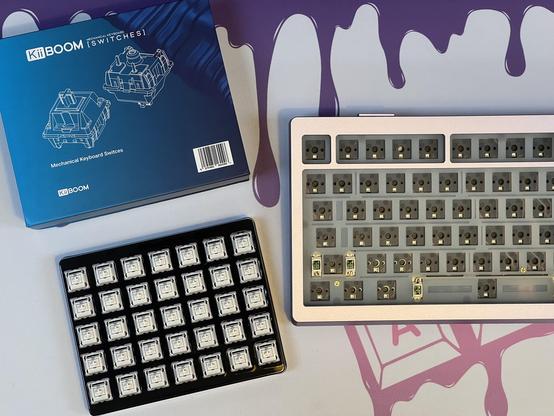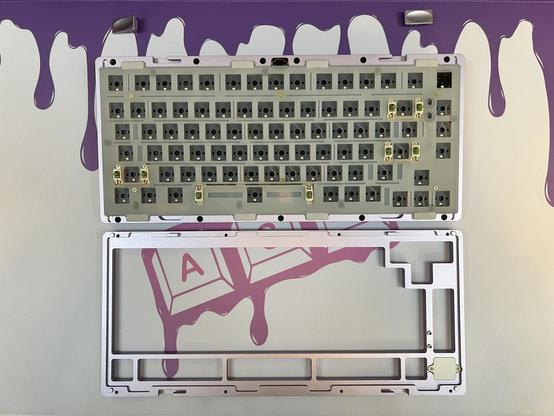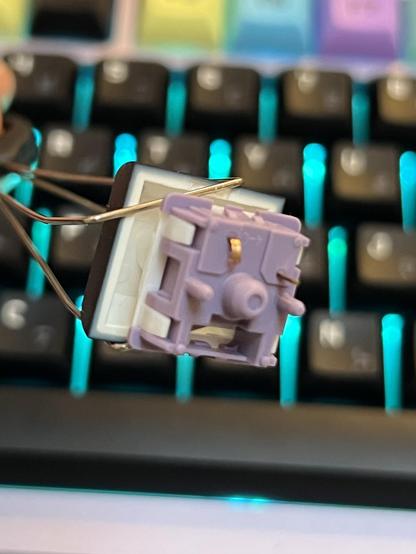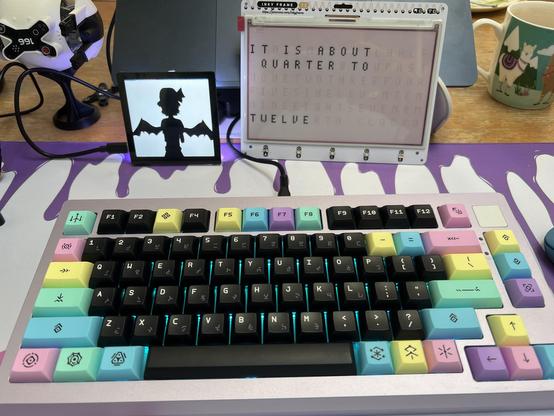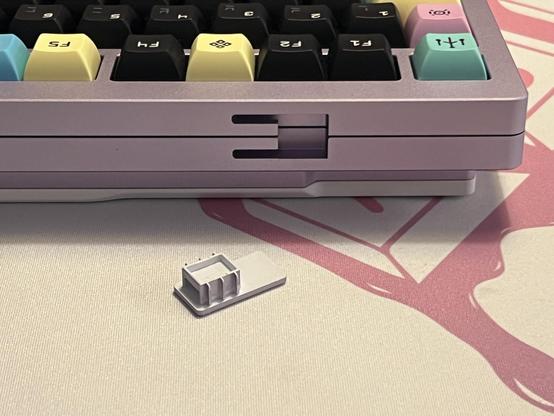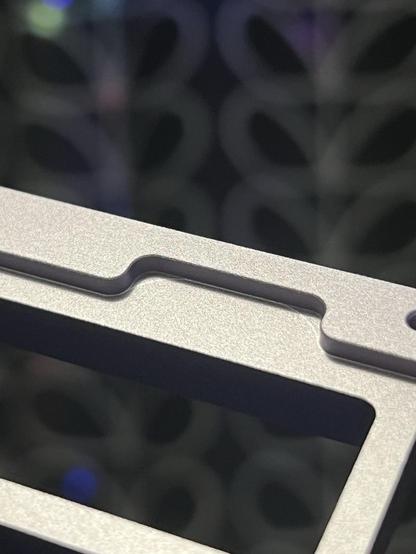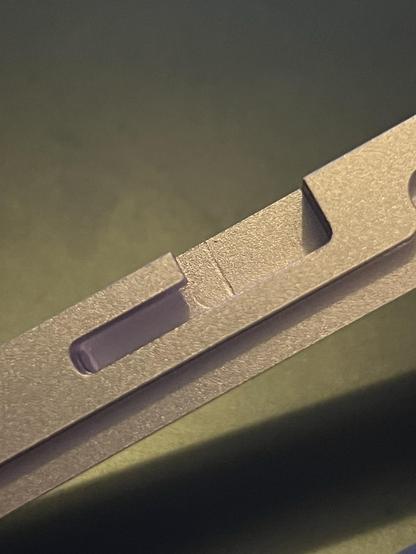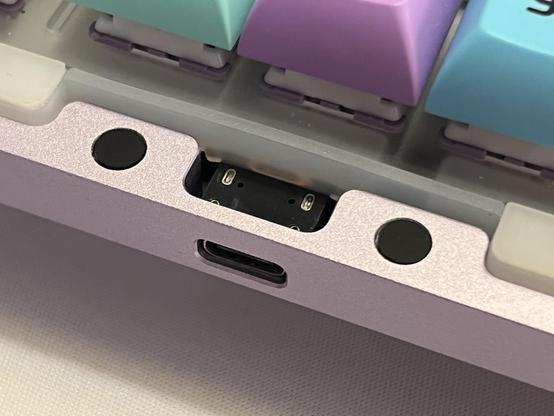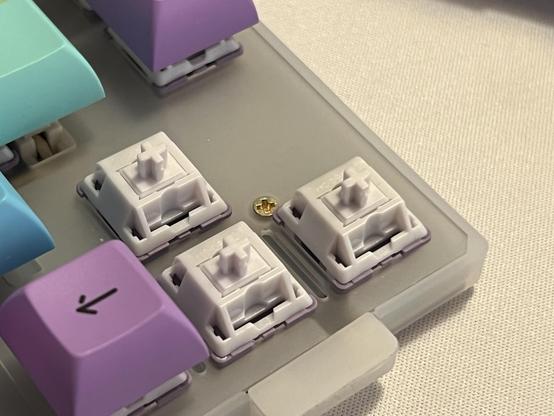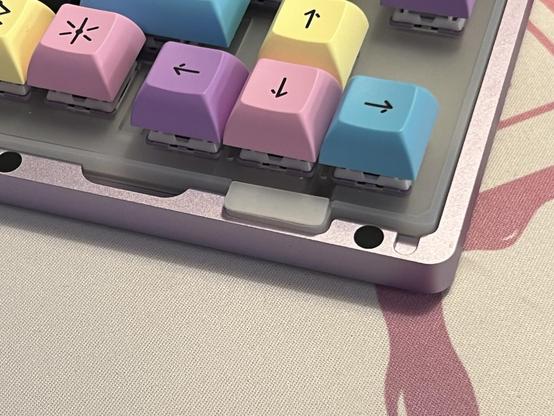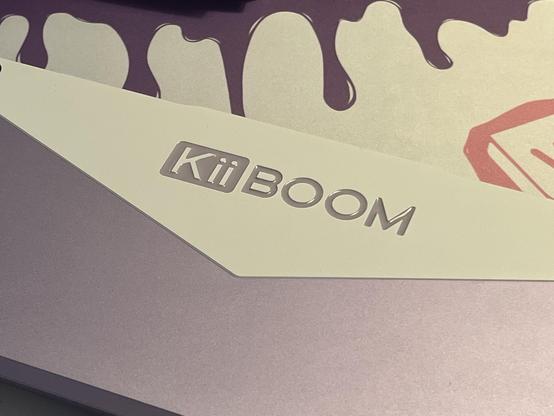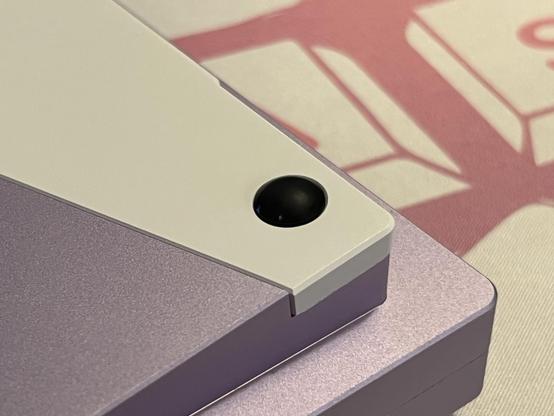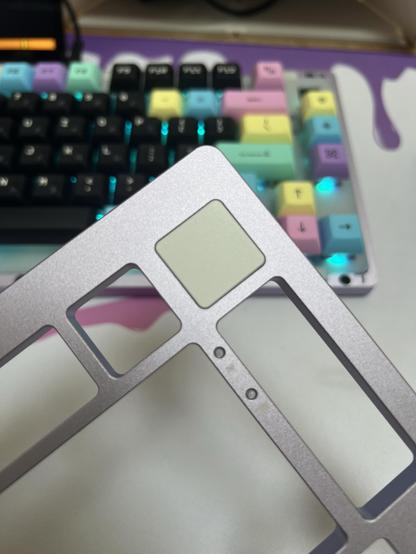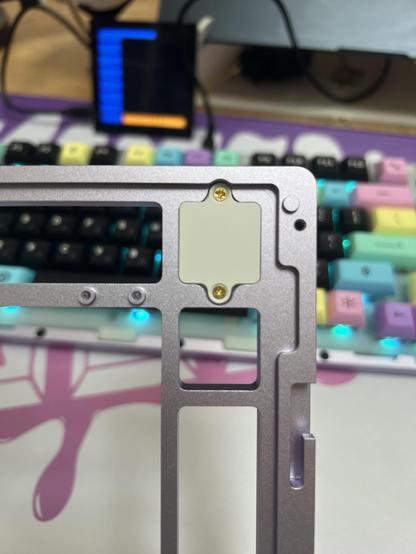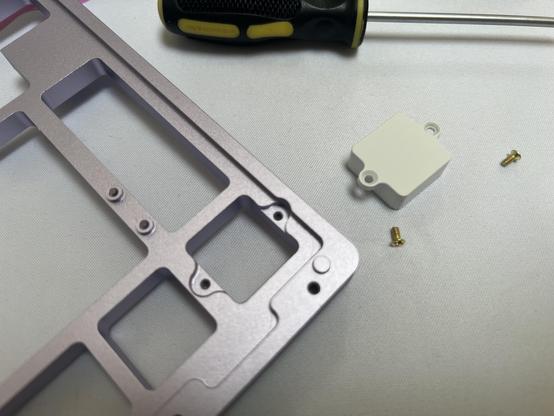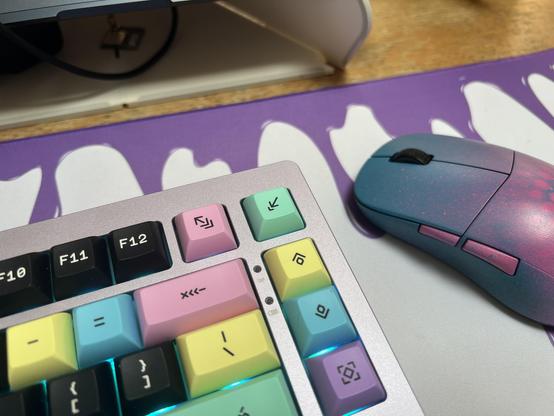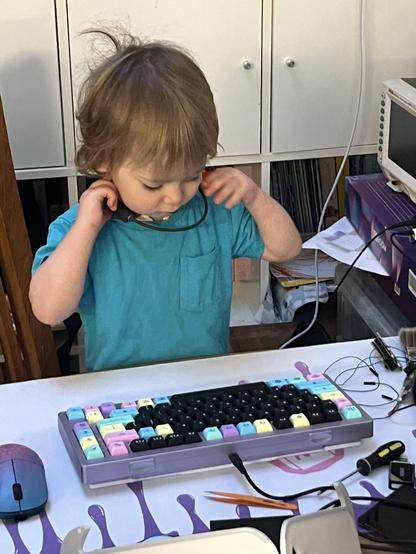KiiBOOM Moonshadow 81 75% Barebones
Since I started really diving into mechanical keyboards I’ve wanted to put together a barebones kit. Most of the shiny group buy kits are far beyond my means, and thoroughly uninterested in humouring the likes of me with review kit. KiiBOOM, though, have been more than happy to send things my way, and I’ve not been shy about admitting I really like some of their stuff. Their expertise seems to lie with acrylic keyboards, and their attention to the finer details, plus their ability to build something with real wow factor (and, in some cases, a bit of a love it/hate it Marmite appeal), really sets them apart from other brands in their ilk.
As such I was keen to try their Moonshadow 81 barebones kit from the very beginning, though it took some time to wear them down and get one sent my way.
Since I’d fallen into the world of keycaps in a big way I already had a set I wanted to use with the Moonshadow – KAM Astha, which I snapped up from the post group-up extras from ProtoTypist – but KiiBOOM were kind enough to supply me with the board and three boxes of their tactile Taro Cream Milk v2 switches (I was feeling naughty and wanted something tactile) to complete the build.
I rushed through the build so quickly that these were the only shots I got 😱
Honestly I expected to sit down and spend an hour or two assembling the board, inserting the switches, snapping photos and sharing detailed progress of my build on BlueSky – my new mainstay for social media – as I went along. What actually happened was a sort of hangry slapdash rush to smash the board together. I was so starved for that mechanical keyboard barebones experience that I had the board together in half an hour, with nothing but a brief hiccup to cast aside a switch with a bent (no doubt from my rush) pin.
Curses! At least it was only one switch. I didn’t even try to bend this one back.
This kit marks the first time I’ve received switches in nice packaging, since my own ISOXLIIS keyboard build used the cheapest switches I could find, pre-loved from Amazon, in a plastic tube with fully a quarter of them already mangled. It was liberating, then, to pluck the switches out of their exuberant, perhaps even excessive, foam-lined cardboard packaging and insert them at breakneck pace. I even flipped the inserts in the boxes around so the switches would be in the right orientation for a rapid, two-finger pick and place keyboard construction speedrun.
The build was not in any meaningful way satisfying. It was more a release of pent up desire, the culmination of months of working toward some semblance of the true meat and potatoes of the mechanical keyboard hobby. I was excited, but perhaps I’ve become overexposed! I was ruthlessly quick and efficient, reducing a cathartic, mindful exercise into a slapdash, hurried mashing together of parts.
The almost finished build, before that ugly off white blaming plate ground me down!
Which is a shame, because the Moonshadow 81 is both a nice, straightforward starter kit and a reassuringly hefty monster of a chunky aluminium 75% board.
By the time I’d convinced KiiBOOM to send me a keyboard they had no real reason to send, only the pink and purple Moonshadow 81 were left. I picked purple since I figured it would fit nicely with KAM Astha’s delightfully pastel, multi-coloured caps. It does, and I’d venture it’s a shame that these colour options are less popular because there’s a certain allure to picking a colour that gives you a bit of a challenge to find complementary caps. I understand, though, since the dark green and grey options look stunning and white is always a safe choice. Suffice to say the purple is pleasing enough that I’m not tempted to respray it.
Build
KiiBOOM’s attention to detail and solid build quality carries through to their aluminium offerings. You definitely get a bunch of metal for your money. The finish is generally good both inside and out, though you will notice some mystery screw holes on the inside that serve apparently no purpose. Perhaps they exist for clamping during manufacture, perhaps they exist because this top shell gets remixed into other designs, I don’t know, but you can’t see them from the outside. This is all the more notable because the Moonshadow 81 is a totally screwless design – screws that hold the plate to the PCB notwithstanding – and instead opts for two little sliding catches that lock on to little fingers in the top and bottom halves along the back edge and clamp them together. The front-edge has a simple L-shaped catch which swings and slides into position.
Curse these plastic clips! Great idea, terrible execution. One always seems to come loose.
The only downside of this design is that the clamps are absolute garbage little bits of plastic- an unusual departure from KiIBOOM’s typical attention to detail – and don’t fit quite snugly. They could easily fall off and get lost, leaving you with two tenuously joined pieces of aluminium and a weekend job for calipers and a 3D printer. Or just a couple of rubber o-rings if you’re lazy. At least this is a testament to the tolerance of the board itself, it fits snugly together and doesn’t pull on the retaining clips.
A couple of tooling marks betray the manufacturing process of the Moonshadow 81. Subtle, only visible from the inside, but intriguing!
As an aside, the little fingers that hold the board together are an interesting insight into the manufacturing process. Upon close inspection you can see tool marks showing how and where they have been drilled out of the aluminium body. You might also notice some marks where a larger bit has been swapped out for a smaller one to finish a tight radius on corners. None of this is visible from the outside, but it’s interesting to get a little peek into how the case is actually made.
The beauty of this tool-free quick release design is twofold- not only is it quick and easy to open the keyboard up for mods, but that same ease applies to cleaning. Need to clean gunk off the top shell? Pop it off, stick it under the tap. Need to clean gunk out from under the keycaps? Pop off the top shell, whip out the entire PCB and just rap it sideways on your desk. Uh… then proceed to clean your desk. Eugh!
The USB port is fixed to the main PCB which is a bold and unusual choice but keeps the whole thing simple. No JST connectors to wrestle with. GLHF if this breaks!
Another slight downside is that the USB connector is mounted directly to the PCB. This means you’re scuppered if it gets damaged, and also means that the PCB itself is held pretty rigidly in the board and doesn’t have the sound and feel damping give or float you might find elsewhere. Yes the PCB is isolated from the aluminium, but this is done via the flexible POM plate which is screwed down to the top of the PCB. The POM plate itself then has little lugs which sit in recesses in the aluminium.
The plate is POM plastic, solid but flexible. It doubles as the mounting system, keeping the PCB isolated from the aluminium enclosure.
Underneath the Moonshadow 81 is a large, triangular-shaped KiiBOOM badge with a lacquer-like KiiBOOM logo debossed into it, colour-matched to the board itself. The badge doesn’t quite fit snugly with the body of the keyboard in places, especially the extreme corners, leaving some sharp points that don’t feel as good as they could. It’s also slightly recessed with respect to the keyboard bottom so there’s a noticeable ridge. It’s not something you might notice or care about, but it’s surprising given how tight the rest of the case seems to be. I’ll chalk this one up to the change of material and process. The badge is screwed to the bottom of the keyboard via recessed screws accessible from inside. This keeps the outside look clean and pristine all round, which is the sort of thing I’ve come to expect from KiiBOOM.
Underneath the board is a white KiiBOOM badge with a lacquer style debossed logo.
I almost forgot, but the little off-white blanking plate in the top-right corner clashed quite badly with the pink of the top shell. I removed it, installed a switch and acquired an extra key. Yay.
There’s a little blanking plate. It looks good in the product photos but less good in real life. Whip it out, boom- extra key!
The Moonshadow 81 is definitely a clacky, not a thocky, board, with a noticeably higher pitched sound than the Cerakey Nada 65 (which might well be my thock benchmark for the foreseeable future). It is not, however, an unpleasant sound.
KiiBOOM’s Taro Cream Milk v2 switches feel great, albeit they’re a smidge too heavyweight for my dainty fingers. I picked them as much because their purple lower half complemented the purple enclosure as because I wanted to make this build tactile.
So what about the software?
It’s the same old story as always. Moonshadow 81 is a QMK board and there was no QMK sourecode for this particular model that I could dig up. Neither in the official QMK repository, nor in KiiBOOM’s own piecemeal forks. When I asked KiiBOOM about this, they pointed me to their website where I could download… the JSON file for VIA. Okay that’s not quite what I meant, but sure, whatever. We know you know we know that this QMK stuff is all a hot mess and I’m continually struggling to balance my frustration with this fact, with my respect for KiiBOOM’s actually pretty good products. As a FOSS developer I can taste the frustration of the QMK developers, but since this sort of nonsense is almost a foregone conclusion in FOSS I can only resign myself to keep testing these boards and keep complaining about the software not respecting open source licenses. Perhaps one day they’ll listen to me. You there, KiiBOOM? Please raise a pull-request for the Moonshadow 81, link to it on the website, embrace the fact that nerds like me want to modify your keyboard firmware and bring it up to speed with the latest QMK enhancements. We’ll all be the better for it.
Anyway, QMK, VIA, you know the score, I grow weary of explaining how it works over and over again so if you’re into macros and key rebinding just know you can do it with the KiiBOOM Moonshadow 81, just don’t expect the very latest QMK features to be available. (In my case I was looking for some macro or similar code, or hacks, or tomfoolery to add some missing macOS functions back into the function row.) Yup this board isn’t super great for macOS users, though you can certainly fudge together some features- for example did you know macOS brightness works by using the “Scroll Lock” and “Pause” (for down and up, respectively) from the Basic key bindings in VIA. Search – available in the Special section – also works for Spotlight. Media keys and volume also work as you would expect, but alas I was unable to find any means to enable Mission Control (neither 0xC1 or KC_MCTL work on this VIA/QMK combo) so it’s fortunate that I basically never use it (I am a hot mess so it’s basically a useless confusing clutter of windows anyway.)
Overall
Save for the slight tolerance mismatch on the badge – easily forgivable – and the much more egregious tolerance mismatch on the shoddy plastic clips that hold the Moonshadow 81 together it’s a really great build. It’s a hefty, solid – almost to a fault – and minimalist board that’s easy to open up and makes for a decent first build experience. Or at least would have if I didn’t rush through it so impatiently!
I find it pairs nicely with the Taro Cream Milk switches, albeit the resulting board is quite clacky and especially loud compared to most of the others I’ve tested. If you want that soothing, mechanical clatter then that’s great, but mind your tappety tap on video calls!
If you hadn’t already noticed from the pictures and stopped reading – another, fatal for some, flaw is the ANSI US layout. It’s almost a foregone conclusion that us non-US users get the short end of the stick, and this will be a dealbreaker for some.
The KiiBOOM Moonshadow 81 as demonstrated by smol boi hard at work!
You can still pick up the Moonshadow 81 in both Purple and Pink from KiiBOOM, albeit it’s a little spendy at $199 for a no-frills, wired barebones board. Of course for many that might be a feature but bear in mind you’ll need to drop another $48 on switches, and easily another $40-$150 on keycaps. One heck of a way to get started, but you wont be disappointed- the purple looks ace.
If you’re hesitant, or want UK ISO, stay tuned- I’ve got another barebones on the way I’m eager to tell you about!
